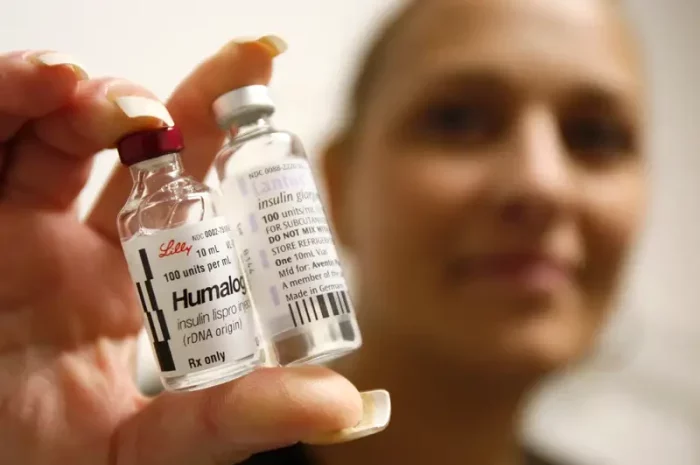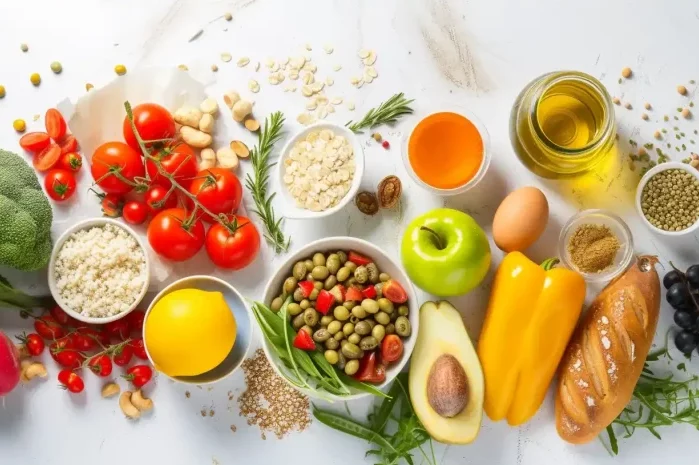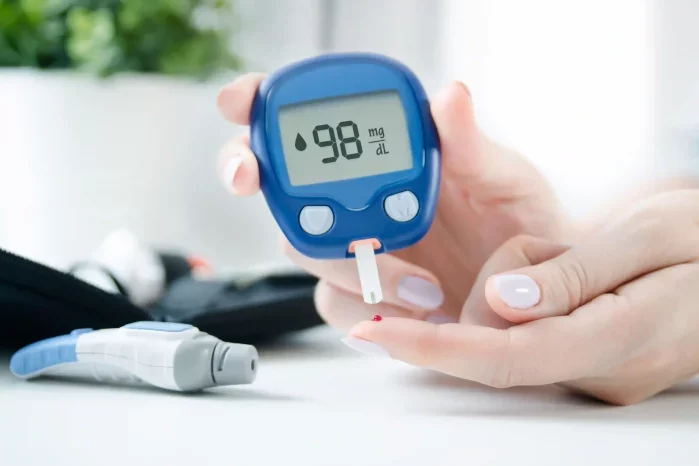Pre-diabetes is a critical stage in the development of type 2 diabetes where blood sugar levels are higher than normal but not yet high enough to be classified as diabetes. This condition serves as a warning sign that without intervention, including lifestyle and dietary changes, the progression to full-blown diabetes is likely. The importance of diet in managing and reversing pre-diabetes cannot be overstated. Certain foods can significantly exacerbate blood sugar levels, making it crucial for individuals with pre-diabetes to be aware of these dietary pitfalls.
Understanding Pre-Diabetes
Before delving into the worst foods for pre-diabetes, it is essential to understand what pre-diabetes is and why it occurs. Pre-diabetes is characterized by impaired glucose tolerance (IGT) or impaired fasting glucose (IFG). Individuals with pre-diabetes have blood sugar levels that are higher than normal but not high enough to be diagnosed as diabetes. According to the American Diabetes Association, a fasting blood sugar level of 100 to 125 mg/dL indicates pre-diabetes.
Risk Factors and Complications
The risk factors for pre-diabetes include being overweight, having a sedentary lifestyle, being over the age of 45, having a family history of diabetes, and having high blood pressure or abnormal cholesterol levels. If left unchecked, pre-diabetes can lead to type 2 diabetes, which carries complications such as cardiovascular disease, nerve damage, kidney damage, and eye damage.
The Role of Diet in Pre-Diabetes
Diet plays a pivotal role in managing pre-diabetes. Foods that cause rapid spikes in blood sugar levels can accelerate the progression from pre-diabetes to type 2 diabetes. Understanding which foods to avoid is crucial in preventing this progression. The glycemic index (GI) is a useful tool in identifying foods that can cause blood sugar spikes. Foods with a high glycemic index cause rapid increases in blood glucose levels and should be avoided or limited in a pre-diabetic diet.
High Glycemic Index Foods
High glycemic index foods are rapidly digested and absorbed, causing a quick rise in blood sugar levels. These foods include sugary snacks, refined grains, and certain starchy vegetables. Avoiding these foods can help maintain stable blood sugar levels and prevent the progression of pre-diabetes.
The Worst Foods for Pre-Diabetes
Sugary Beverages
Sugary beverages are one of the worst offenders for individuals with pre-diabetes. These drinks, including soda, fruit juices, and sweetened teas, contain high amounts of sugar that cause rapid spikes in blood glucose levels.
Soda and Sweetened Beverages
Regular consumption of soda and other sweetened beverages is linked to an increased risk of developing type 2 diabetes. These drinks contain high fructose corn syrup or cane sugar, both of which contribute to insulin resistance and increased blood sugar levels.
Fruit Juices
While fruit juices may seem healthy, they often contain as much sugar as soda. Even 100% fruit juices can cause rapid spikes in blood sugar levels due to their high natural sugar content and lack of fiber, which normally helps to slow sugar absorption.
Refined Grains and Starches
Refined grains and starches such as white bread, white rice, and pasta can cause significant spikes in blood sugar levels. These foods have been stripped of their fiber and nutrients, leading to rapid digestion and absorption.
White Bread and Pasta
White bread and pasta are made from refined flour, which has a high glycemic index. These foods are quickly converted into glucose in the body, leading to elevated blood sugar levels. Whole grain alternatives are a better choice as they contain fiber that helps regulate blood sugar.
White Rice
Similar to white bread and pasta, white rice has a high glycemic index and can cause rapid increases in blood sugar levels. Brown rice or other whole grains like quinoa or barley are better options as they have a lower glycemic index and contain more nutrients and fiber.
Sugary Snacks and Desserts
Sugary snacks and desserts such as candies, cookies, cakes, and pastries are detrimental to individuals with pre-diabetes. These foods are high in sugar and refined carbohydrates, leading to rapid spikes in blood glucose levels.
Candy and Confectionery
Candy and confectionery products are primarily composed of sugar and offer little to no nutritional value. Consuming these items can cause immediate spikes in blood sugar levels, making them particularly harmful for pre-diabetic individuals.
Baked Goods
Baked goods such as cookies, cakes, and pastries often contain high amounts of sugar and refined flour. These ingredients cause quick increases in blood sugar levels and should be avoided or consumed in very limited quantities.
Processed and Packaged Foods
Processed and packaged foods often contain hidden sugars, unhealthy fats, and refined carbohydrates that can negatively impact blood sugar levels.
Breakfast Cereals
Many breakfast cereals, especially those marketed to children, contain high amounts of added sugars and refined grains. These cereals can cause significant spikes in blood sugar levels and should be replaced with whole grain or low-sugar alternatives.
Snack Foods
Snack foods such as chips, crackers, and pretzels are often made with refined grains and contain added sugars and unhealthy fats. These foods can lead to elevated blood sugar levels and should be replaced with healthier snack options like nuts, seeds, and fresh vegetables.
High-Fat and Fried Foods
High-fat and fried foods can contribute to insulin resistance and increase the risk of developing type 2 diabetes.
Fast Food
Fast food is often high in unhealthy fats, refined carbohydrates, and sugars. Consuming fast food regularly can lead to weight gain, insulin resistance, and elevated blood sugar levels.
Fried Foods
Fried foods such as french fries, fried chicken, and fried snacks are high in unhealthy fats and calories. These foods can contribute to weight gain and insulin resistance, making them particularly harmful for individuals with pre-diabetes.
High-Sugar Fruits
While fruits are generally healthy, some high-sugar fruits can cause rapid spikes in blood sugar levels and should be consumed in moderation.
Bananas and Grapes
Bananas and grapes are high in natural sugars and can cause quick increases in blood sugar levels. Consuming these fruits in moderation and pairing them with a source of protein or healthy fat can help mitigate their impact on blood sugar levels.
Dried Fruits
Dried fruits such as raisins, dates, and apricots have a concentrated sugar content due to the removal of water. These fruits can cause rapid spikes in blood sugar levels and should be consumed in small quantities.
Full-Fat Dairy Products
Full-fat dairy products can be high in saturated fats, which can contribute to insulin resistance and elevated blood sugar levels.
Whole Milk and Cream
Whole milk and cream contain high amounts of saturated fat, which can negatively impact insulin sensitivity. Low-fat or non-fat dairy alternatives are better choices for individuals with pre-diabetes.
Full-Fat Cheese
Full-fat cheese is high in saturated fat and calories. Opting for low-fat or reduced-fat cheese can help manage calorie and fat intake, which is important for maintaining healthy blood sugar levels.
Alcohol
Alcohol can have a significant impact on blood sugar levels and should be consumed in moderation or avoided altogether.
Beer and Sweet Wines
Beer and sweet wines contain high amounts of carbohydrates and sugars, which can cause rapid increases in blood sugar levels. Choosing dry wines or spirits with no added sugars can help minimize the impact on blood sugar levels.
Mixed Drinks
Mixed drinks and cocktails often contain sugary mixers and syrups that can lead to elevated blood sugar levels. Opting for drinks with sugar-free mixers or consuming alcohol in moderation can help manage blood sugar levels.
Healthy Alternatives and Dietary Tips for Pre-Diabetes
While avoiding the worst foods for pre-diabetes is crucial, it is equally important to focus on healthy alternatives and dietary strategies that can help manage blood sugar levels and prevent the progression of pre-diabetes.
Emphasize Whole Grains
Whole grains are rich in fiber, which helps slow the absorption of sugar and maintain stable blood sugar levels. Incorporating whole grains such as brown rice, quinoa, barley, and whole wheat products into your diet can be beneficial for managing pre-diabetes.
Incorporate Lean Proteins
Lean proteins such as chicken, turkey, fish, legumes, and tofu can help regulate blood sugar levels and promote satiety. Including a source of protein in every meal can help prevent blood sugar spikes and maintain stable energy levels throughout the day.
Choose Healthy Fats
Healthy fats, such as those found in avocados, nuts, seeds, and olive oil, can help improve insulin sensitivity and reduce inflammation. Incorporating these fats into your diet can be beneficial for managing pre-diabetes.
Increase Fiber Intake
Fiber is essential for regulating blood sugar levels and promoting digestive health. High-fiber foods such as vegetables, fruits, legumes, and whole grains can help manage pre-diabetes by slowing the absorption of sugar and promoting satiety.
Stay Hydrated
Staying hydrated is important for overall health and can help manage blood sugar levels. Drinking water and other non-sweetened beverages can help prevent dehydration and support optimal metabolic function.
Practice Portion Control
Portion control is crucial for managing blood sugar levels and preventing overeating. Eating smaller, balanced meals throughout the day can help maintain stable blood sugar levels and prevent spikes.
Monitor Blood Sugar Levels
Regular monitoring of blood sugar levels can help individuals with pre-diabetes understand how different foods and activities impact their blood sugar levels. This information can be used to make informed dietary choices and adjustments.
Limit Processed Foods
Processed foods often contain added sugars, unhealthy fats, and refined carbohydrates that can negatively impact blood sugar levels. Focusing on whole, minimally processed foods can help manage pre-diabetes and promote overall health.
Engage in Regular Physical Activity
Physical activity is essential for managing pre-diabetes and improving insulin sensitivity. Incorporating regular exercise, such as walking, cycling, swimming, or strength training, can help regulate blood sugar levels and promote overall health.
See also:What Diabetics Can and Cannot Eat
Conclusion
Managing pre-diabetes through diet is a critical step in preventing the progression to type 2 diabetes. By avoiding foods that cause rapid spikes in blood sugar levels, such as sugary beverages, refined grains, sugary snacks, processed foods, high-fat and fried foods, high-sugar fruits, full-fat dairy products, and alcohol, individuals with pre-diabetes can better manage their condition and improve their overall health.
Incorporating healthy alternatives such as whole grains, lean proteins, healthy fats, high-fiber foods, and staying hydrated can help maintain stable blood sugar levels and prevent the progression of pre-diabetes. Practicing portion control, monitoring blood sugar levels, limiting processed foods, and engaging in regular physical activity are also essential strategies for managing pre-diabetes.
By making informed dietary choices and adopting a healthy lifestyle, individuals with pre-diabetes can take control of their health and reduce the risk of developing type 2 diabetes. Remember, the journey to better health begins with small, consistent changes that can have a significant impact on long-term well-being.
Related topics:
What Is The Best Fruit Juice For Diabetics

























